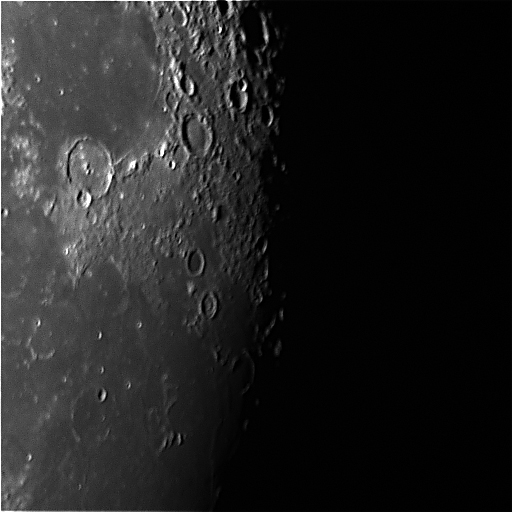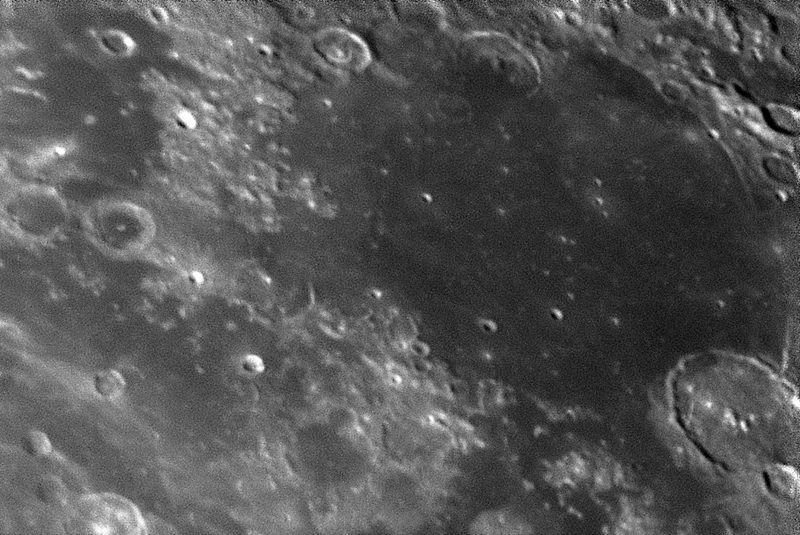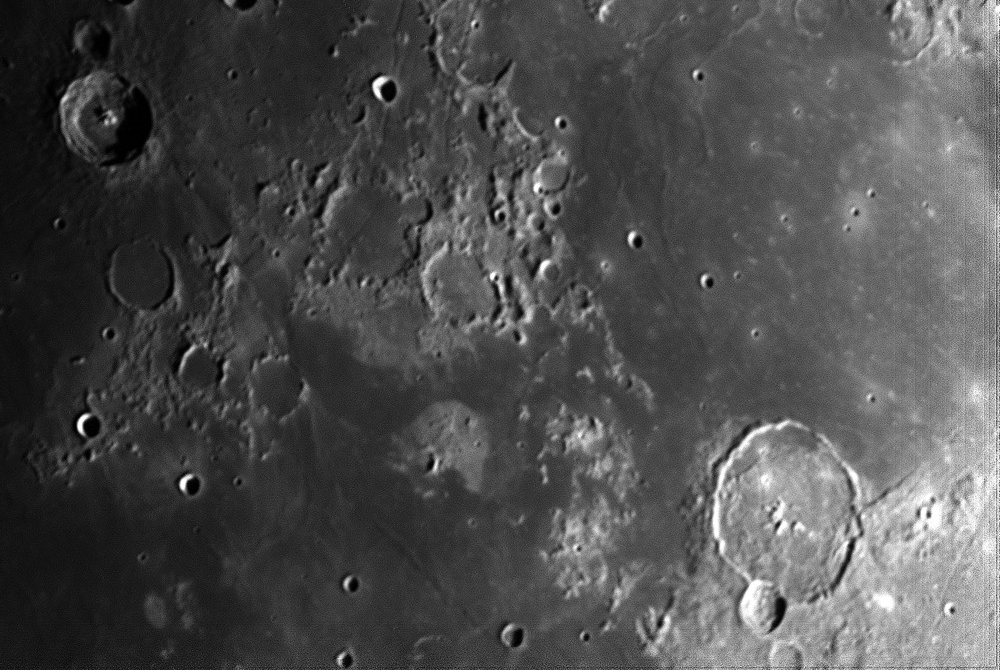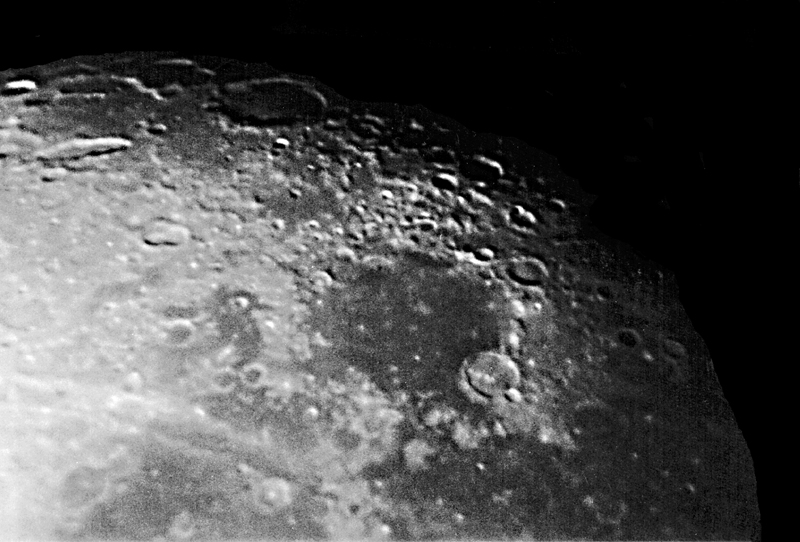
1/250 second exposure, Fuji Super HG V 400 film.
300mm f/6 newtonian at prime focus.

Situated on the edge of Mare Humorum is the interesting crater Gassendi. With a very flat floor and a high mountain ridge in the centre, it provides a very good view at low Sun angles. The smaller crater on its edge is Gassendi-D.
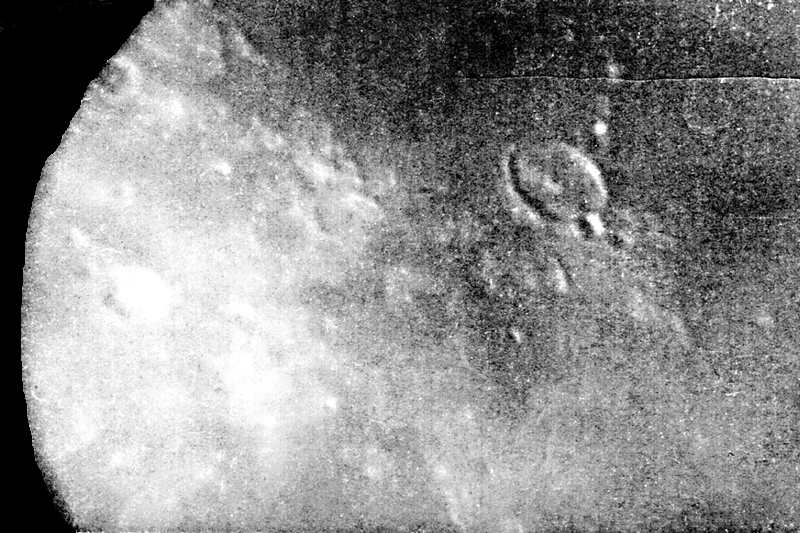
It is interesting to compare these two photographs. Throughout the 1960's and 1970's Kodak Tri-X was the standard film for astrophotography, with its ASA rating of 400. However it was a very grainy film as can be seen in this image. Comparing the 2 photographs shows just how much films have improved over the past 30 years!
Of course, film has now been totally superseded by electronic imaging for planetary images. This is shown very clearly in the CCD image below. There is just no comparison!!!
